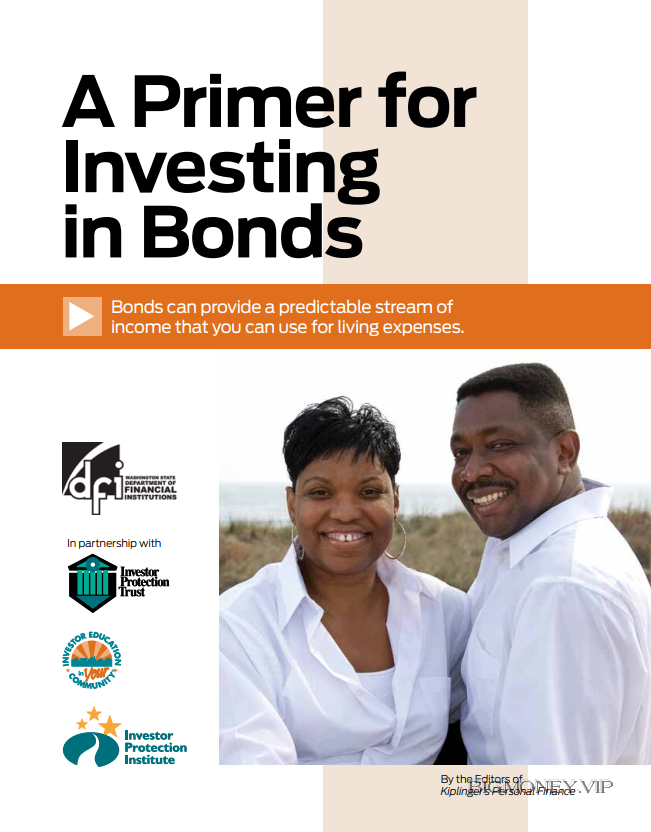A Primer for Investing in Bonds

Bonds offer an opportunity to spread your risk
What Is a Bond?
A bond is basically a loan issued by a corporation or
government entity. The issuer pays the bondholder
a specified amount of interest for a specified time,
usually several years, and then repays the bondholder
the face amount of the bond.
Bonds may belong in your investment plan for a
number of good reasons:
n Bonds can provide a predictable stream of relatively
high income that you can use for living expenses or for
funding other parts of your investment plan.
n Bonds offer an opportunity to spread your risk.
During a recession, for instance, prices of high-quality
bonds may go up even as prices of stocks go down.
(Of course, bonds can also lose value. See page 5.)
n Bonds can generate profits from capital gains.
n Bonds can provide valuable tax advantages. In
particular, interest from most bonds issued by state
and local governments and their agencies is exempt
from federal income tax and may be exempt from
local income taxes, too.
Note that the word safety doesn’t appear on this
list. People often think that bonds are about the safest
investment around. But as you’ll see, such a notion is
not always correct.
How Do Bonds Work, Anyway?
Bonds are IOUs issued by corporations (both domes-
tic and foreign), state and city governments and their
agencies, the federal government and its agencies,
and foreign governments. They are issued for periods
as short as a few months to as long as 30 years, occa-
sionally even longer.
When you buy a bond, you become a creditor of the
issuer; that means the issuer owes you the amount
shown on the face of the bond, plus interest. (Bonds
typically have a face value of $1,000 or $5,000,
although some come in larger denominations.) You
get a fixed amount of interest on a regular schedule—
every six months, in most cases—until the bond ma-
tures after a specified number of years. At that time
you are paid the bond’s face value. If the issuer goes
broke, bondholders have first claim on the issuer’s
assets, ahead of stockholders.
In most cases, you won’t receive the actual bond
certificate. Bond ownership is usually in the form of
a “book entry,” meaning the issuer keeps a record of
buyers’ names but sends out no certificates. U.S.
Treasury bonds, for instance, are issued only electroni-
cally or by banks and brokers in book-entry form.
After bonds are issued, they can be freely bought
and sold by individuals and institutional investors in
what’s called the secondary market, which works
something like a stock exchange.
All bonds share these basic traits, but they come
in a variety of forms. Let’s take a closer look.
Secured bonds are backed by a lien on part of a
corporation’s plant, equipment or other assets. If the
corporation defaults, those assets can be sold to
pay back bondholders.
Debentures are unsecured bonds, backed only by
the general ability of the corporation to pay its bills.
If a company goes broke, debentures can’t be paid off
until secured bondholders are paid. Subordinated
debentures are another step down the totem pole.
Investors in these don’t get paid until after holders of
so-called senior debentures get their money.
Zero-coupon bonds may be secured or unsecured.
They are issued at a big discount from face value be-
cause they pay no interest until maturity, when the in-
terest is paid in a lump sum at the same time the bond
is redeemed and you get your original investment
back. However, tax on the interest is due in the year in
which it accrues, as if you had received it, unless the
bond is in an IRA or other tax-deferred account.
Municipal bonds are issued by state or city govern-
ments, or their agencies, and come in two varieties:
General obligation bonds are backed by the full
taxing authority of the government that issues the
bonds.
Revenue bonds are backed only by the receipts
from a specific source of revenue, such as a bridge or
highway toll, and thus are not considered as secure as
general obligation bonds. Interest paid on municipal
bonds is generally exempt from federal income taxes
and usually income taxes of the issuing state as well.
Interest on “private purpose” municipal bonds—those
that provide some benefits to private activities—may
be subject to the alternative minimum tax, however.
Build America Bonds, issued in 2009 and 2010
(and still available in secondary markets) are munici-
pal bonds that pay taxable interest at a higher rate
than tax-free interest on other munis. BAB bonds are
designed to appeal to pension plans, IRAs and other
non-taxable or tax-deferred entities.
U.S. Treasury debt obligations that mature in a
year or less are called Treasury bills and those that
mature in more than one year to ten years may be
called Treasury notes. Treasury securities that come
due in more than ten years are called Treasury bonds.
All are backed by the full faith and credit of the federal
government, which is an ironclad guarantee that
you’ll get your money back. Interest from Treasuries
has a special sweetener: It is exempt from state and
local income taxes.
Agency securities are issued by various U.S.
government-sponsored organizations, such as
Fannie Mae and the Tennessee Valley Authority.
Although not technically backed by the Treasury,




